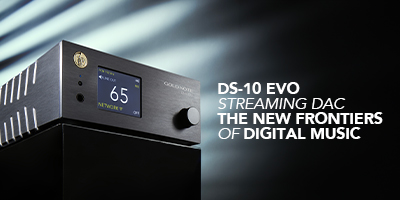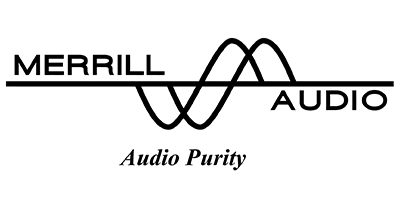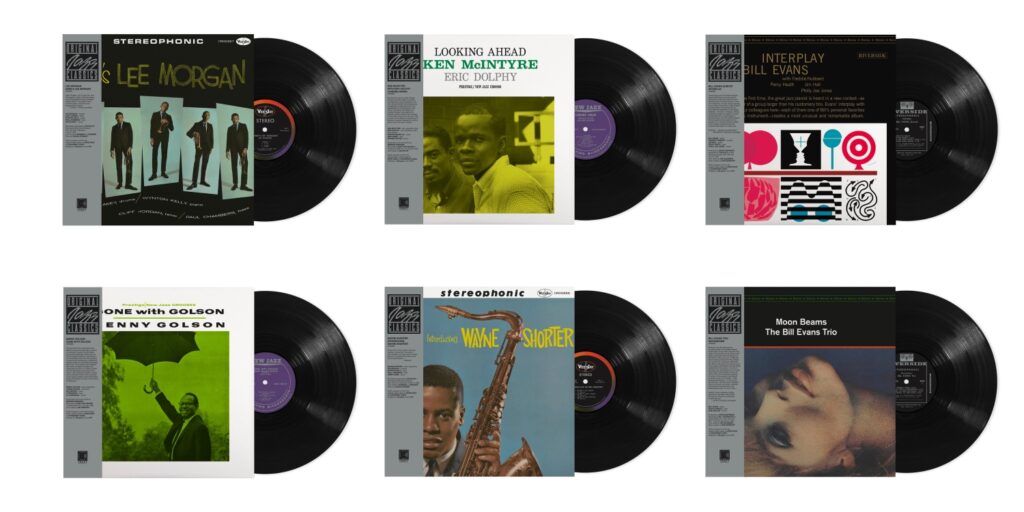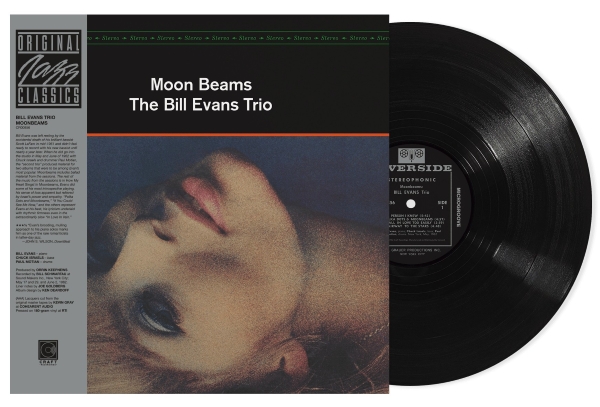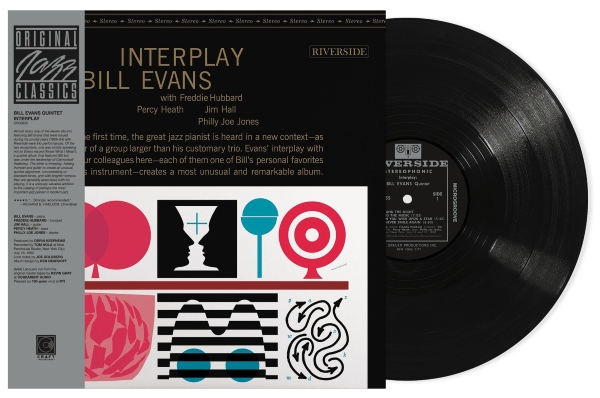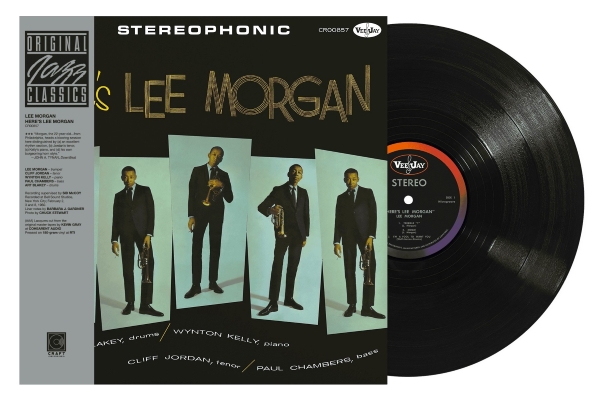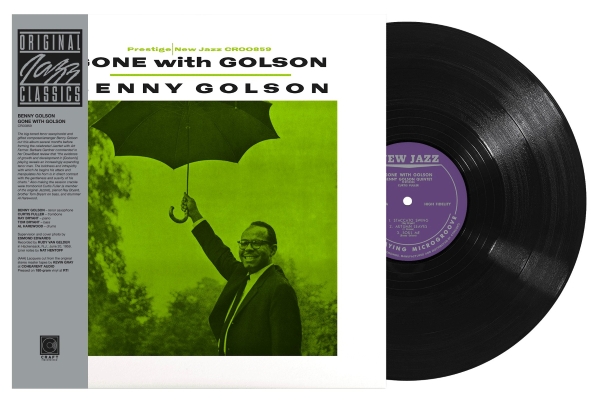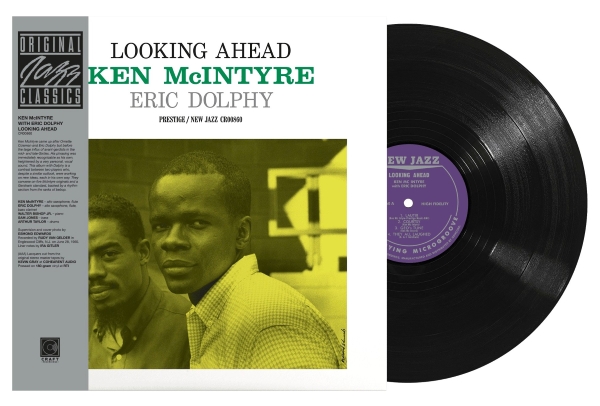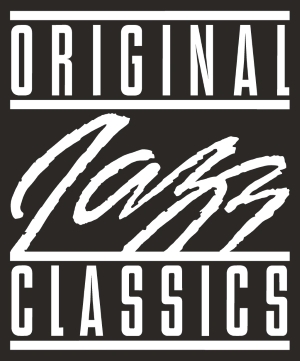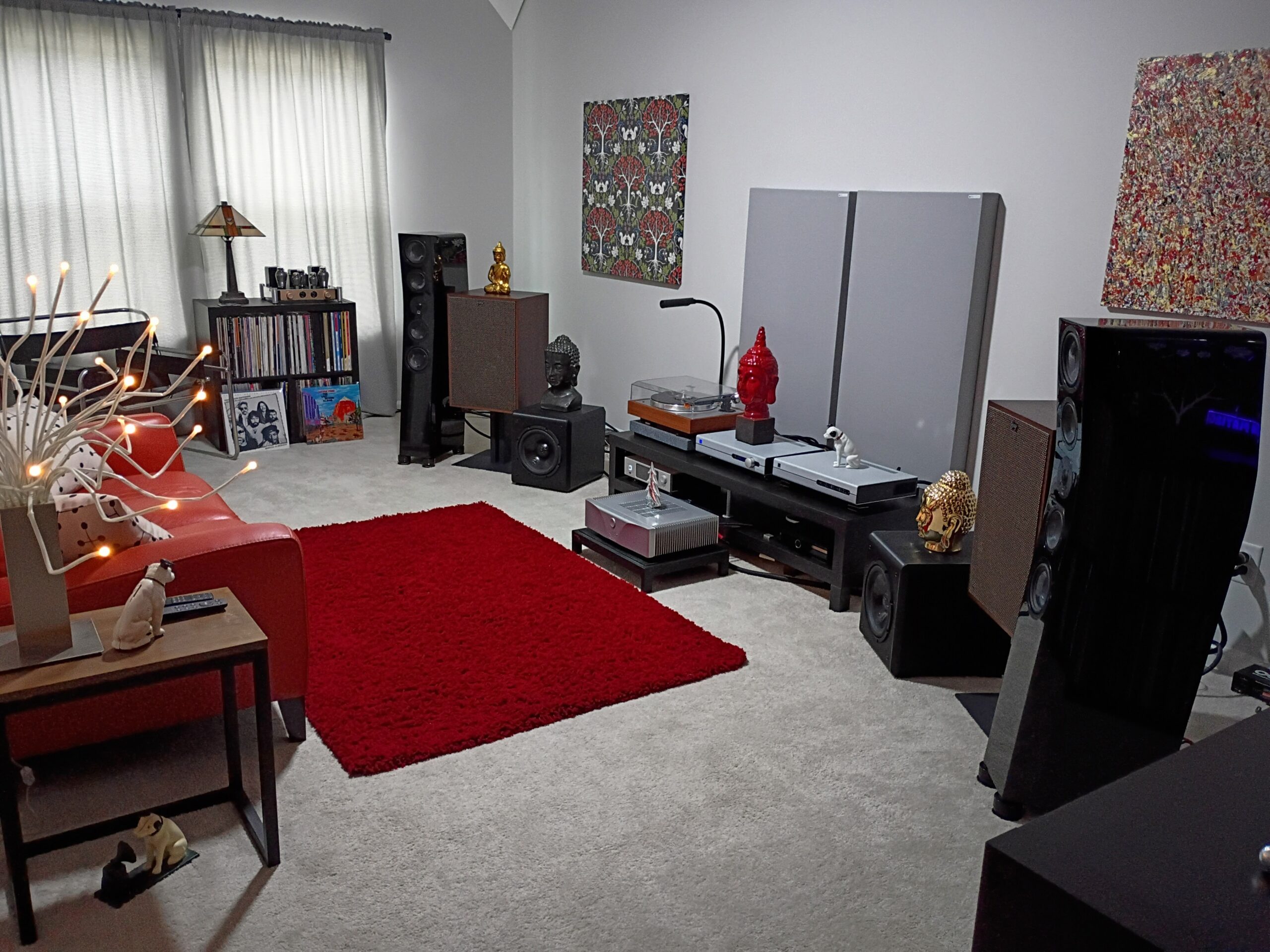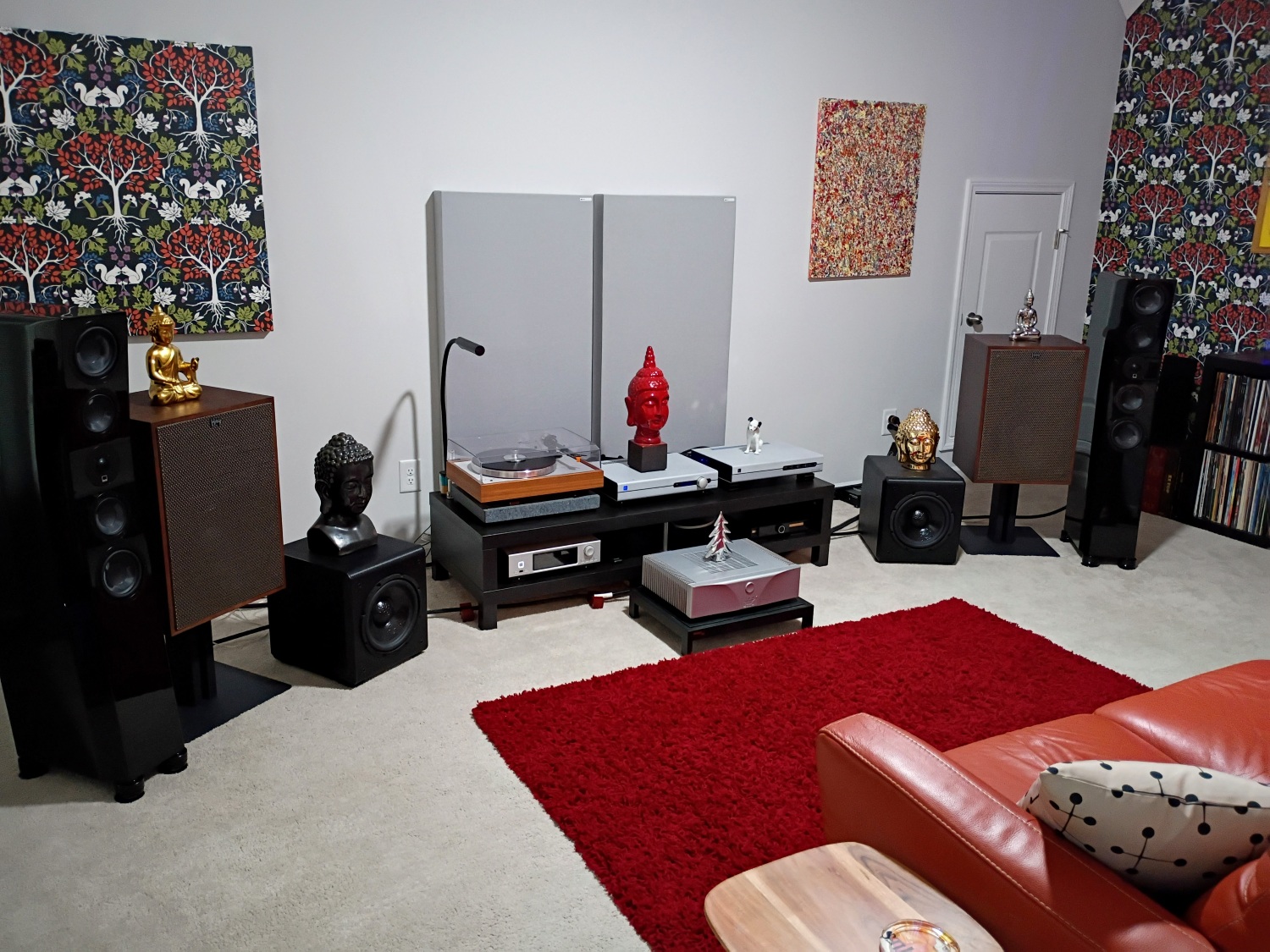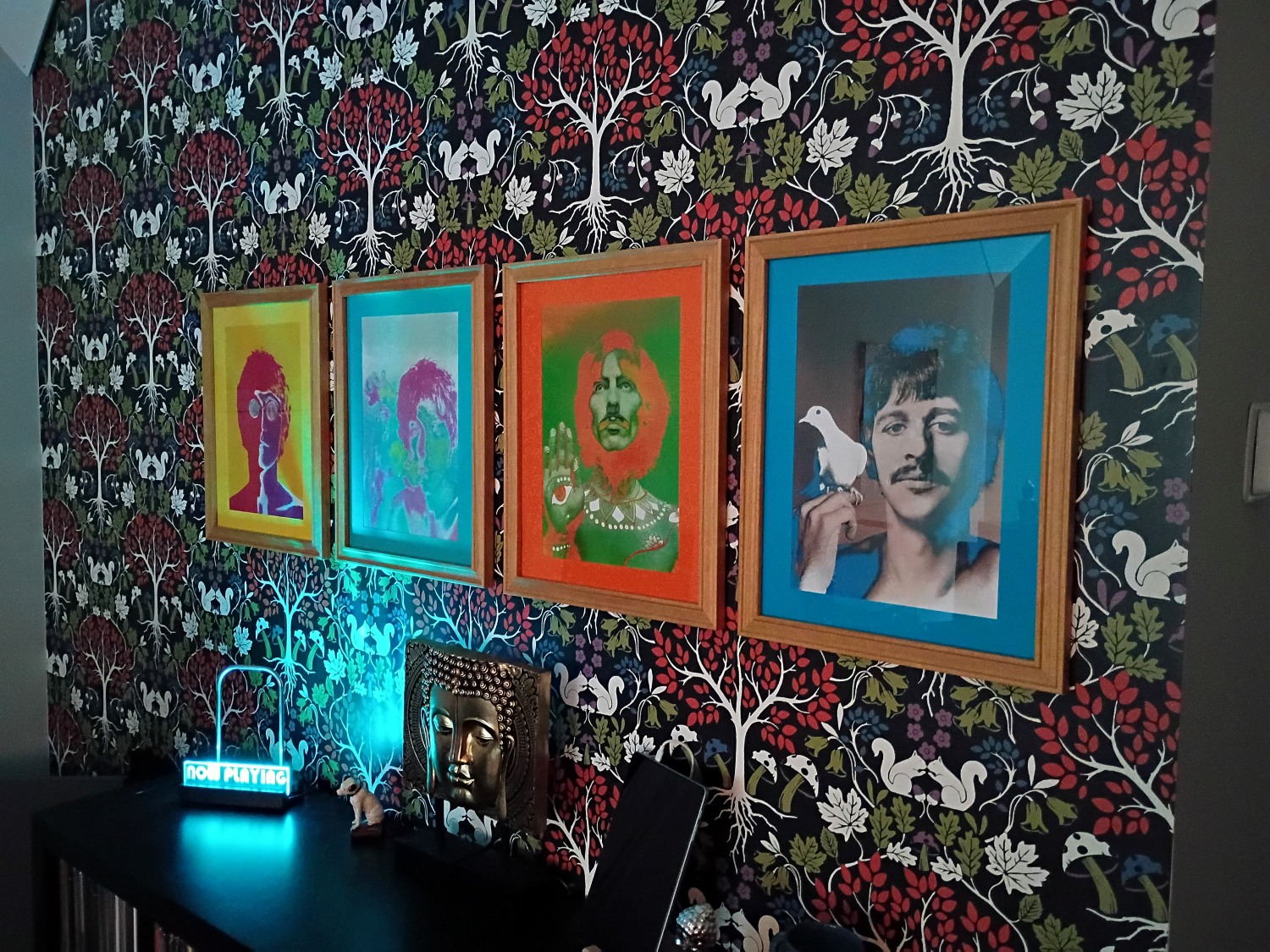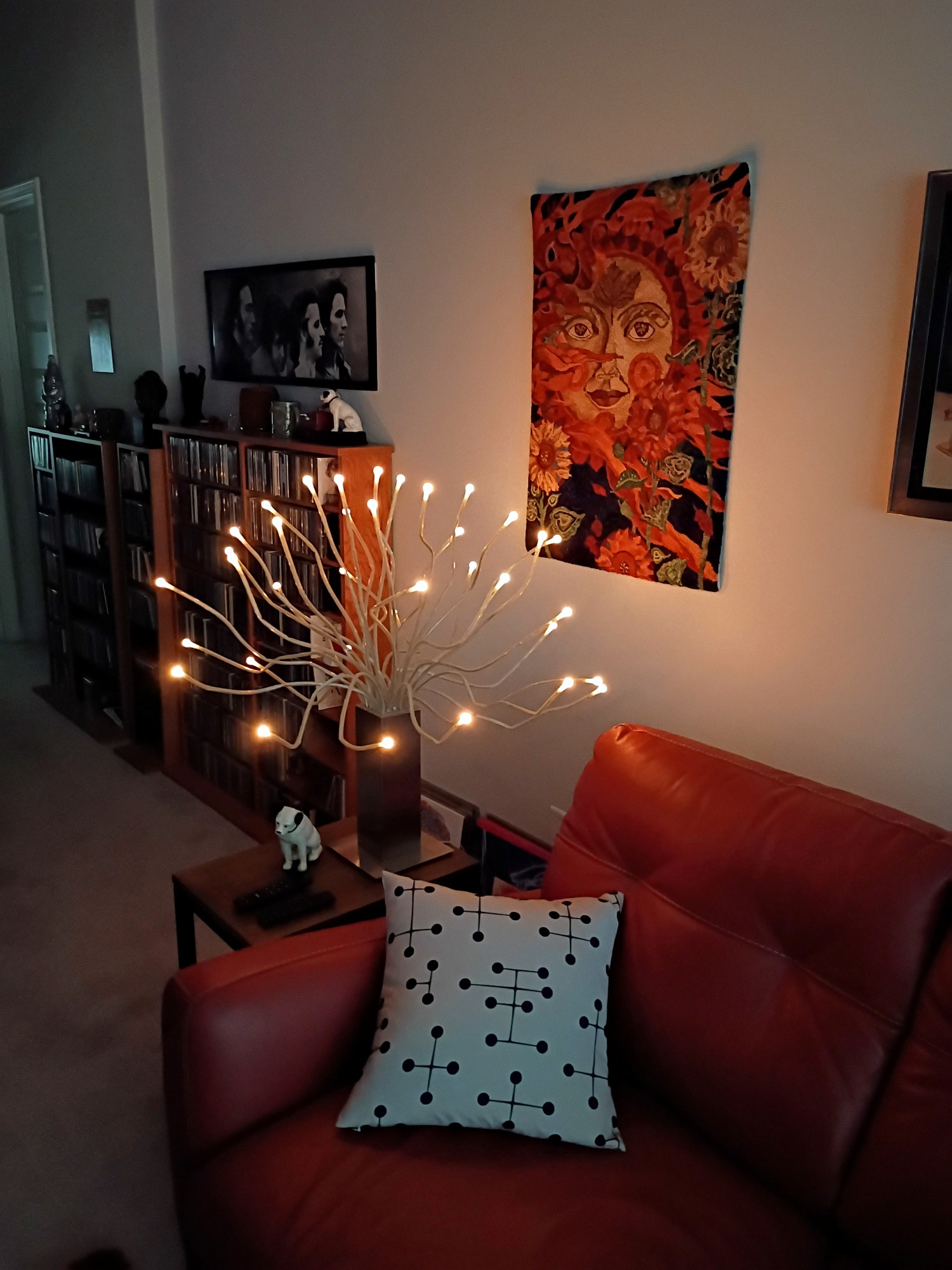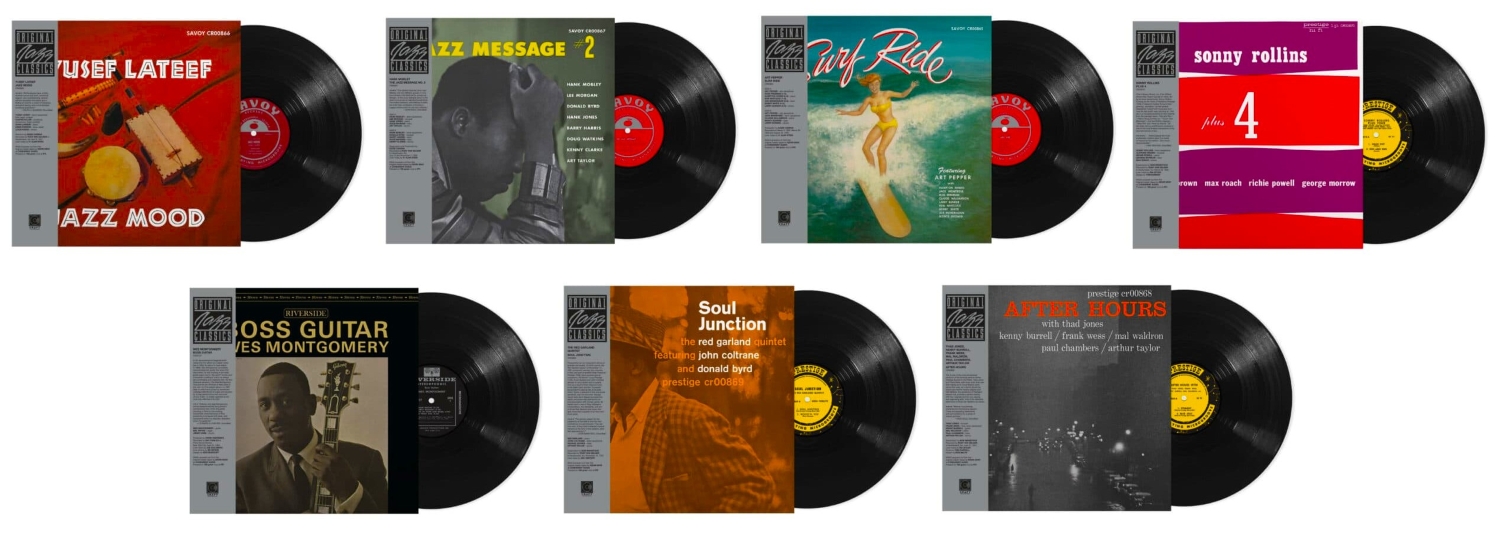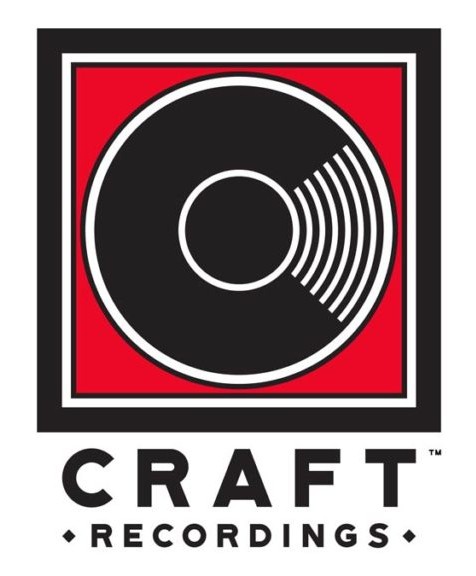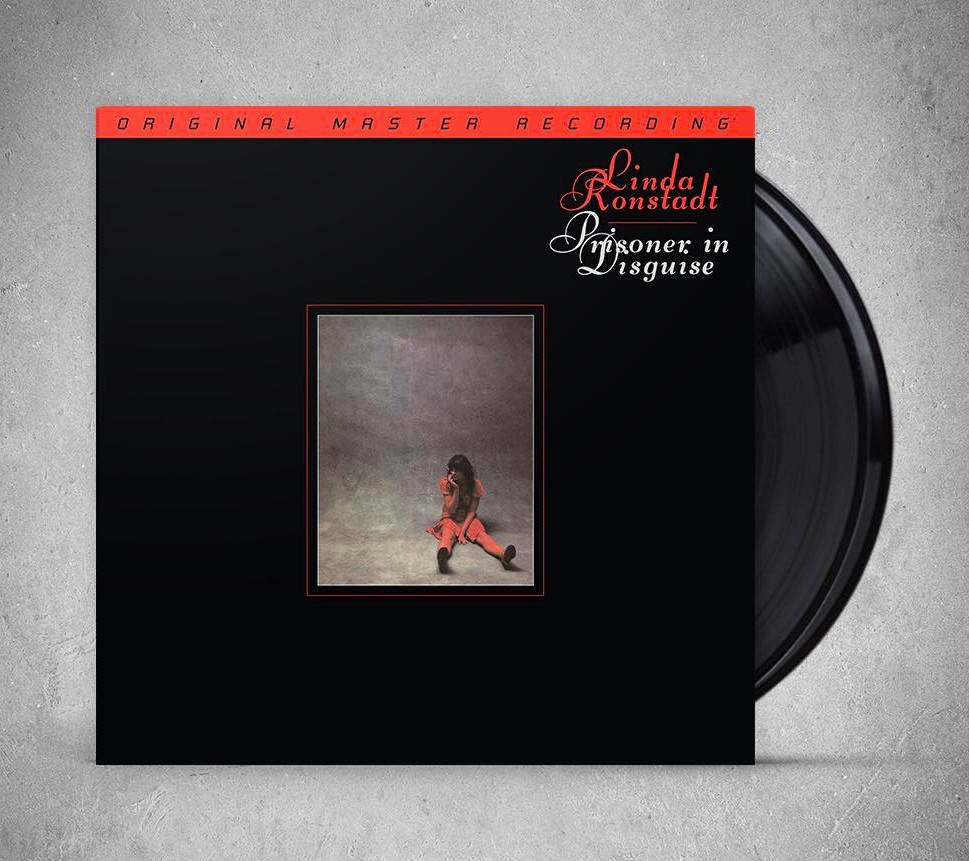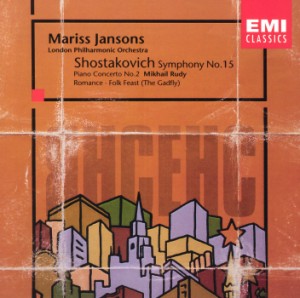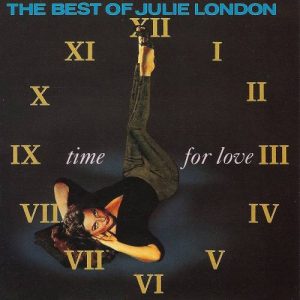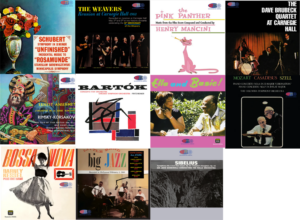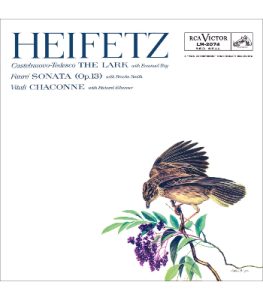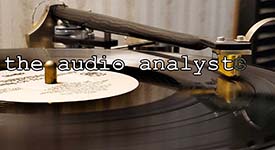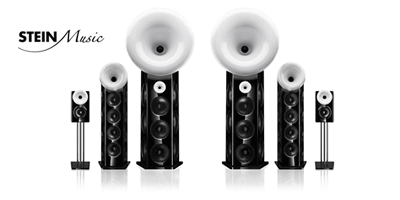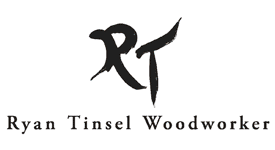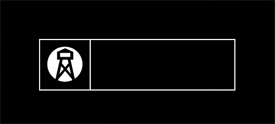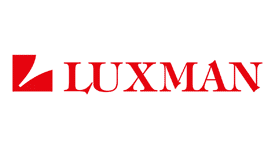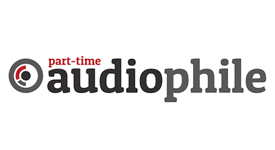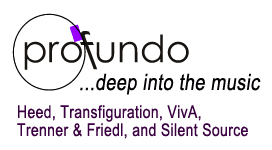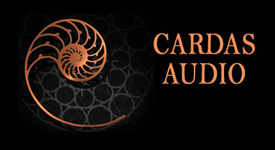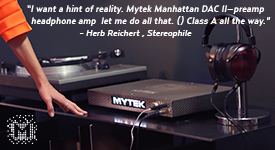Craft Recordings' mid-year selection of releases in the Original Jazz Classics (OJC) reboot series features six new titles, including a pair on the Vee Jay Records label that have never appeared as OJC's prior to now. Those include two albums from pianist Bill Evans, both coming from 1962, including the trio setting Moon Beams and an unusual quintet outing, Interplay. The pair of Vee Jay albums are both from 1960, featuring saxophonist Wayne Shorter's debut record, Introducing Wayne Shorter, and trumpeter Lee Morgan's Here's Lee Morgan. The release also includes a pair of albums on the New Jazz imprint of the Prestige label, with tenor saxophonist Benny Golson's 1959 quintet date Gone With Golson, along with an avant-jazz quintet date from alto saxophonist and flautist Ken McIntyre with multi-instrumentalist Eric Dolphy, 1961's Looking Ahead. I received all except the Wayne Shorter title for evaluation, and should it straggle in, I'll update the compendium. In addition to the LP reissues, all of these recordings are also being made available as high resolution digital files for download or streaming on most major services. The LPs can be ordered from Craft's web store and many online providers, and they'll also be available at brick and mortar locations like your favorite independent record store.
As usual, the OJC reissues were cut from the original analog tapes by Kevin Gray at Cohearent Audio; the LPs were pressed on 180 gram vinyl at RTI. All arrived housed in heavy tip-on outer jackets that perfectly match the originals, with crisp artwork sourced from the vaults of Vee Jay, Prestige, and Riverside Records. The outer jackets all have the classic, high-gloss coating that distinguished the original pressings of the various OJC labels back in the day. Each jacket's custom OBI strip adds to their collectibility, while also providing a glimpse of each reissue's artistic and technical information. LPs are also inserted into protective rice paper inner sleeves, which is the finishing touch of Craft's perfectionist packaging. While the delivered package is truly outstanding, the pressings from RTI are perfection incarnate.
The Bill Evans Trio, Moon Beams. 180 gram Riverside Records LP, $39
Following the tragic death of Bill Evans' bassist Scott LaFaro in 1961, the pianist went through an extended period of mourning, and essentially withdrew from his usual trio performances. Choosing instead to generally only appear as a sideman on a handful of recordings over the next nine months or so. Scott LaFaro was Bill Evans' creative foil and constant antagonist in the studio, and it took some time for him to regain his bearings artistically in the aftermath of the bassist's untimely death. He enlisted bassist Chuck Israels to fill LaFaro's slot, and along with drummer Paul Motian sequestered to Sound Maker Studios in NYC beginning in May, 1962, under the direction of producer Orrin Keepnews for Riverside Records. The trio recorded two albums worth of material over a period of a few weeks; Orrin Keepnews intentionally divided the recordings thematically into separate LPs. Released in December 1962, Moon Beams became Bill Evans' sole album that consisted entirely of ballads, while the more upbeat recordings were released a little over a year later on How My Heart Sings. Model and chanteuse Nico graces Moon Beam's album cover; she'd soon make waves with Andy Warhol and as a member of The Velvet Underground.
Of course, the big question was how would new bassist Chuck Israels' playing compare with the incomparable Scott LaFaro—that's a rather silly question, but Israels' style perfectly complemented Evans' superb pianisms. From the opening track, the Evans original "RE: Person I Knew," the moment Israels' bass enters the soundstage, he provides the answer. His solo that follows Evans' relatively spare intro offers a thrilling taste of Israels' artistry, and leaves little doubt as to why he remained a part of Evans' great second trio for no fewer than ten albums. The pair of Evans originals bookend a selection of standards and songs from Tin Pan Alley, with his second composition, "Very Early," featuring really superb interplay between all three players. Engineer Bill Schwartau spread the trio nicely across the soundstage, and captured the players with palpable realism. Both Evans' piano and Israels' bass tone are perfect; Moon Beams is a great sounding record filled with superb performances, and an auspicious re-entry by Evans into the trio settings that formed the cornerstone of his repertory.
Moon Beams has been one of the more popular titles in Bill Evans' extensive catalog, and therefore has remained consistently in print over the years. Though there's some conversation as to whether any of those later pressings other than the original OJC repress and the uber-expensive Analog Productions 45 rpm release were remastered from the original tapes. This was the only OJC reissue from this batch I happened to have on vinyl, and Craft's new pressing bettered it in every way. You can order a copy of Moon Beams from Craft's web store HERE; the new 180 gram pressing was quieter, with greater clarity and deeper, more refined bass than my OJC original—it doesn't get much better than this! Highly recommended!
Bill Evans, Interplay. 180 gram Riverside Records LP, $39
The 1962 sessions for Interplay were a bit of a departure for Bill Evans, finding him in a quintet setting for the first time as a leader. The players convened at Nola Penthouse Studios in NYC on July 16-17, with Tommy Nola engineering the record; this was only about a month following the wrap of the sessions that yielded Moon Beams. Of course, Orrin Keepnews produced the sessions for Riverside Records, but most unusually, he didn't write the liner notes. Keepnews and Evans enlisted A-list players for the recordings, including Freddie Hubbard on trumpet, Jim Hall on guitar, Percy Heath on bass, and Philly Joe Jones behind the drum kit. This was the second album Evans had recorded with guitarist Jim Hall in only a matter of weeks; their duo album Undercurrent would be released later that year on the United Artists label. Interplay was one of only a handful of albums released during Evans' most prolific period as a leader that wasn't a trio setting.
The title track, "Interplay," is the only Evans original featured here; the remaining tunes are mostly fast-paced reworkings of standards. But "Interplay" is the outlier, and one of the few blues Evans had ever written, and it's undeniably the album's centerpiece, stretching out across eight-plus minutes. Where everyone is given ample opportunity to solo; Jim Hall's guitar work here is undoubtedly one of the album's many highlights. Freddie Hubbard's muted turn on trumpet plays off Evans' block piano chords, and the mood here is eerily reminiscent of Evans' participation in Miles' classic Kind of Blue from just a few years earlier.
Other than a scattering of original represses, Interplay has only been reissued domestically as the 1987 OJC, another 2015 OJC reissue, and a limited-edition 45 rpm reissue from Analog Productions in 2010. Very few original pressings or OJCs are available on Discogs, and the AP 45 rpm pressings are fairly spendy, making this new Craft reissue a definite treasure! Despite having no previous familiarity with this record, I'm really impressed with the new reissue, which sounds superb, and Tommy Nola's job behind the controls delivers Interplay with plenty of audiophile credibility. I'm certain you'll love this record, and you can order a copy from Craft's web store HERE. Craft's new reissue comes highly recommended!
Lee Morgan, Here's Lee Morgan. 180 gram Vee Jay Records LP, $39
I first became acquainted with the music of trumpeter Lee Morgan in the early Nineties, when I did my first real deep-dive into classic jazz. The weekday afternoon deejay on local Atlanta jazz station WCLK (Clark-Atlanta University) opened his set daily by playing Morgan's classic "Ceora," a tune that's so jazzily catchy and melodic that it instantly became etched on my brain. In no time at all, I'd discovered much of Lee Morgan's classic Blue Note catalog of albums, including The Sidewinder, The Cooker, Cornbread, Search for the New Land, The Gigolo—I just couldn't get enough of his superb work! And discovering that Morgan had played extensively with Art Blakey's Jazz Messengers opened my eyes to that equally impressive catalog.
Here's Lee Morgan is a rare date on the Vee Jay label where Lee Morgan stepped up from his usual role as sideman with Art Blakey and into the lead position. Blakey plays drums here (though perhaps a bit more restrained than his usual star-turn with the Jazz Messengers), along with Clifford Jordan on tenor saxophone, Wynton Kelley on piano, and Paul Chambers on upright bass. The album was recorded at Bell Sound Studio in NYC, with Sid McCoy producing for Vee Jay; the sessions took place in early February, 1960, and the LP was released later that year. Here's Lee Morgan was originally made available as a stereo pressing, but was also repressed from the mono tapes regularly throughout the first few years following its debut. Other than a very limited (and by all reports, poorly pressed) Vee Jay reissue in 1978, the album has been out of print on LP domestically for six-plus decades, and was never reissued as part of the original OJC series. Original LPs on Discogs are few and far between, with minty copies fetching fairly princely sums, which will make Craft's new OJC reissue quite valuable to collectors.
Lee Morgan had already released multiple LPs as a leader on Blue Note by this point, so this Vee Jay LP is definitely a curiosity, but contains some incredible playing from everyone involved. The track list is an even mix of Morgan originals and standards—one of the highlights is Lee's neo-noir take on the Frank Sinatra classic, "I'm a Fool to Want You," where his muted horn tone is simply divine. And his originals "Terrible T," "Mogie," and "Bess" are extended blowing sessions with plenty of room for Clifford Jordan and Morgan to exchange licks. The Vee Jay recording is surprisingly clean and clear—this is definitely a great album to have in my collection, and Lee Morgan completists will want this reissue, which is a true bargain at this price point.You can order a copy HERE from Craft's web store—Here's Lee Morgan comes very highly recommended!
Benny Golson, Gone With Golson. 180 gram Prestige/New Jazz LP, $39
1959's Gone With Golson was tenor saxophonist Benny Golson's fifth studio album, and his first on the New Jazz imprint. It's a swinging, hard-bop date that features Golson's horn, trombonist Curtis Fuller, Ray Bryant on piano, his brother Tommy Bryant on bass, and Al Harewood on drums. Gone With Golson was recorded in one afternoon, June 20, 1959, at the Van Gelder Studios in Hackensack, New Jersey, with none other than Rudy Van Gelder at the controls. Esmond Edwards produced the album for New Jazz, and it was released later that same year.
The performances here are mostly Benny Golson compositions, with a swinging version of perennial chestnut "Autumn Leaves" mixed in for good measure. Golson's group swings through originals like "Staccato Swing," "Soul Me," and "Jam for Bobbie." But they slow the tempo down significantly for the delightful "Blues After Dark," where Golson and Fuller trade licks through the first couple of choruses, then light it up with expressive solos as the lengthy track lopes along. Ray Bryant is at his bluesy best with a soulful solo in the song's center.
The original LP was issued as a mono recording, and every successive repress—up until the 1994 OJC reissue—was also mono. That 1994 OJC was initially only issued as a stereo compact disc, and the LP has never previously been reissued in stereo; Gone With Golson makes its vinyl stereo debut here. The album has a really nice stereo image spread, with Benny Golson's tenor sax on the right, and Curtis Fuller's sonorous trombone on the left; Ray Bryant's piano is front and center. Average condition original mono LPs fetch crazy money, making this stereo reissue quite valuable to collectors and jazz lovers alike.
You can pre-order a copy of Gone With Golson from Craft's web store HERE. The sound quality of this LP is superb— I was not expecting to enjoy it nearly as much as I have! Craft's reissue comes very highly recommended!
Ken McIntyre & Eric Dolphy, Looking Ahead. 180 gram Prestige/New Jazz LP, $39
Ken McIntyre's debut album, 1961's Looking Ahead, was actually a partnership with multi-instrumentalist Eric Dolphy, whose influence on a generation of musicians can't be overstated. McIntyre gets top billing because he wrote all the compositions, save for the Gershwin brothers' "They All Laughed." Ken McIntyre was fresh out of the Boston Conservatory of Music, but his originals stylistically helped herald the coming avant garde movement in jazz; Eric Dolphy was already totally on board. Downbeat only gave Looking Ahead two and-a-half stars in its 1961 review, but they obviously didn't understand the complexity of the music—hardly anyone did at that point in time.
Looking Ahead was recorded in a single day, June 28, 1960, at the Van Gelder Studio in Hackensack, New Jersey, with Rudy Van Gelder at the controls; Esmond Edwards produced for New Jazz. In the sessions, McIntyre played alto sax and flute; Eric Dolphy played both alto and baritone saxes, as well as flute; Walter Bishop Jr. played piano, Sam Jones played bass, and Art Taylor was behind the drum kit. The completed album was released in January, 1961, and Ira Gitler's liner notes make heavy mention of the undeniable influence of Ornette Coleman on this record. Though Gitler clearly notes that Ken McIntyre and Eric Dolphy didn't completely discard chord structure in the way Coleman seemingly had.
Clean domestic copies of Looking Ahead in its original mono are virtually nonexistent on Discogs, and most of the available 1986 OJC stereo reissue LPs have condition issues. Craft's new reissue also uses the stereo tapes; this is a remarkably great-sounding LP, and maybe the highlight of the entire bunch! Ken McIntyre solos on the left of the soundstage, while Eric Dolphy occupies the right; they frequently spar, but when they harmonize, it's divine! You can pre-order a copy of Looking Ahead from Craft's web store HERE. It's a slightly dissonant masterpiece that's also often wildly melodic, and well worth a listen! Very highly recommended!
Craft's OJC Reboot Continues to Bring It!
This new group of OJC reissues is full of surprises, especially the Vee Jay and New Jazz entries in the series. I was blown away by the goodness, and even shocked by how essential I found most of the titles, even though I had virtually no previous exposure to them. Thanks again to Jacob Kossak for his consideration and assistance—all these albums come very highly recommended!
Craft Recordings
All images courtesy of Craft Recordings.

